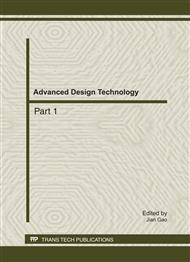p.962
p.967
p.973
p.980
p.987
p.994
p.1000
p.1004
p.1008
Research on Techniques of Structural Topology Optimization Using Cellular Automaton
Abstract:
By integrating cellular automaton (CA) theory into topology optimization of continuum, the local rule is defined for sensitivity analysis and updating of the design variable, according to the analysis of the structural mechanical response. Topology optimization design of loaded structure is conducted using minimal compliance as the optimization objective. The optimal distribution of material in the design domain is finally obtained. Comparing to other algorithms, the local rule has proved to be computationally efficient to solve structural topology optimization problems. The resulting optimal structures are free of numerical instabilities such as the checkerboard patterns and mesh dependency.
Info:
Periodical:
Pages:
987-993
Citation:
Online since:
August 2011
Authors:
Price:
Сopyright:
© 2011 Trans Tech Publications Ltd. All Rights Reserved
Share:
Citation:


